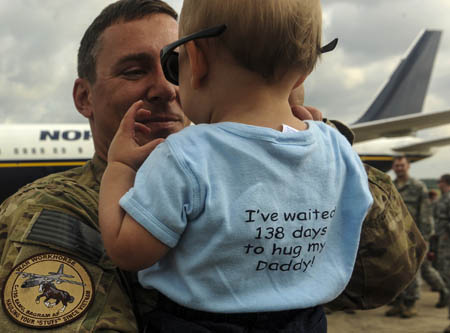 After Afghanistan, the Air Force will go back to a rotational deployment schedule much like the pre-9/11 Air and Space Expeditionary Force construct, Chief of Staff Gen. Mark Welsh said in an interview with the Daily Report last week. “Our intent now, as we get back to, hopefully, a more stable rotational pattern and demand signal,” is to “go back to some of the precepts of that initial AEF construct: deploy larger groups of people from the same units, instead of rainbowing multiple organizations into a single organization at a deployed location,” Welsh said. Airmen will know when “they’re vulnerable to be deployed, when they can expect to go, when they can be training to prepare to go.” It makes “eminent sense to go back to that,” Welsh said, especially since he sees no letup in the demand for Air Force deployments. “There will be some lingering support in Afghanistan for…some amount of time—and that level is still to be determined—but there are lots of other combatant commands that want the things that we offer (which) haven’t gotten them for a while.” The demand, he said, “is not going to go away, it’s just going to shift.” He also noted that no AEF construct will add more people. “So, the career fields that are still” in very high demand will continue to deploy more frequently, “until the demand signal starts to slow down. And that’s after 2014, maybe 2015,” Welsh said.
After Afghanistan, the Air Force will go back to a rotational deployment schedule much like the pre-9/11 Air and Space Expeditionary Force construct, Chief of Staff Gen. Mark Welsh said in an interview with the Daily Report last week. “Our intent now, as we get back to, hopefully, a more stable rotational pattern and demand signal,” is to “go back to some of the precepts of that initial AEF construct: deploy larger groups of people from the same units, instead of rainbowing multiple organizations into a single organization at a deployed location,” Welsh said. Airmen will know when “they’re vulnerable to be deployed, when they can expect to go, when they can be training to prepare to go.” It makes “eminent sense to go back to that,” Welsh said, especially since he sees no letup in the demand for Air Force deployments. “There will be some lingering support in Afghanistan for…some amount of time—and that level is still to be determined—but there are lots of other combatant commands that want the things that we offer (which) haven’t gotten them for a while.” The demand, he said, “is not going to go away, it’s just going to shift.” He also noted that no AEF construct will add more people. “So, the career fields that are still” in very high demand will continue to deploy more frequently, “until the demand signal starts to slow down. And that’s after 2014, maybe 2015,” Welsh said.
F-35As from the Vermont Air National Guard have deployed to Puerto Rico in recent days, continuing a major buildup of U.S. Air Force assets in Latin America aimed at combating drug trafficking and pressuring the regime of Venezuelan leader Nicolas Maduro.

